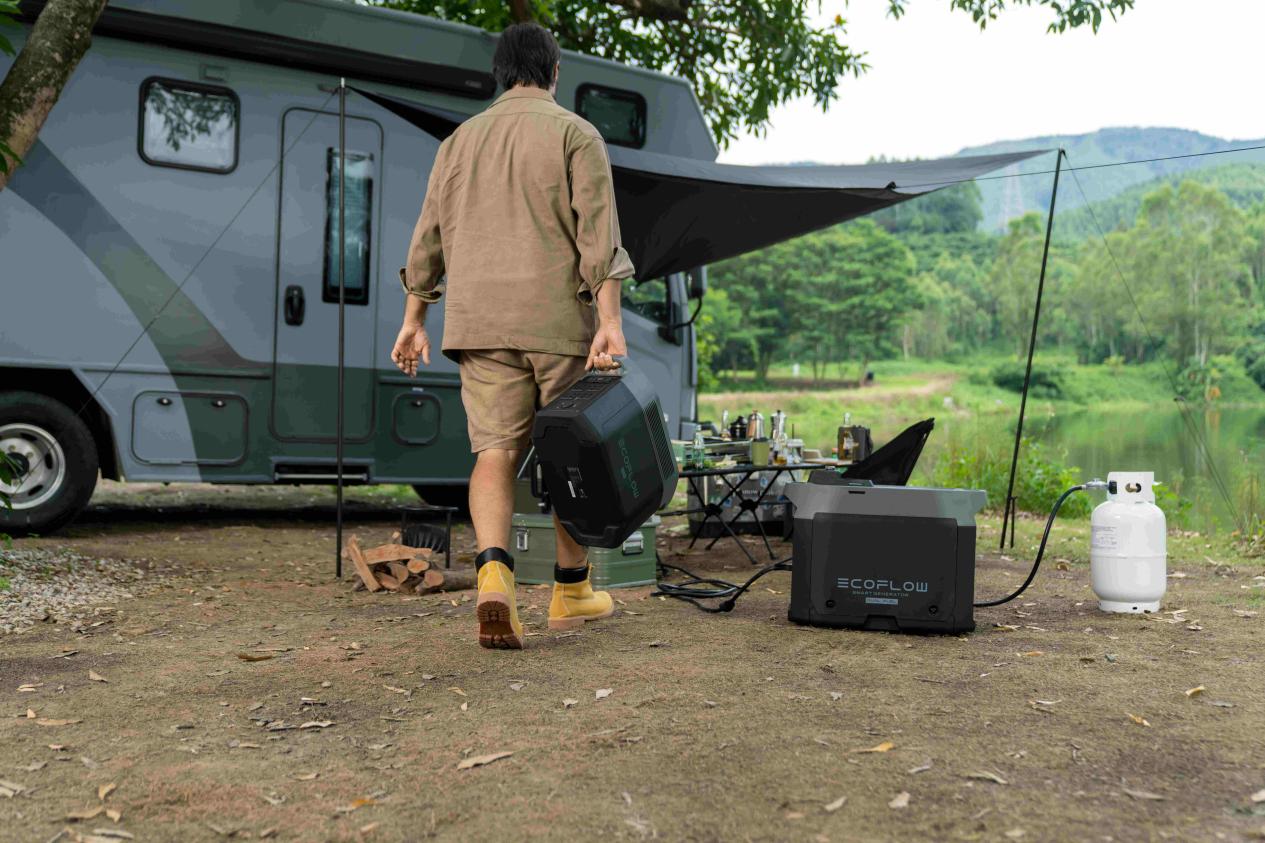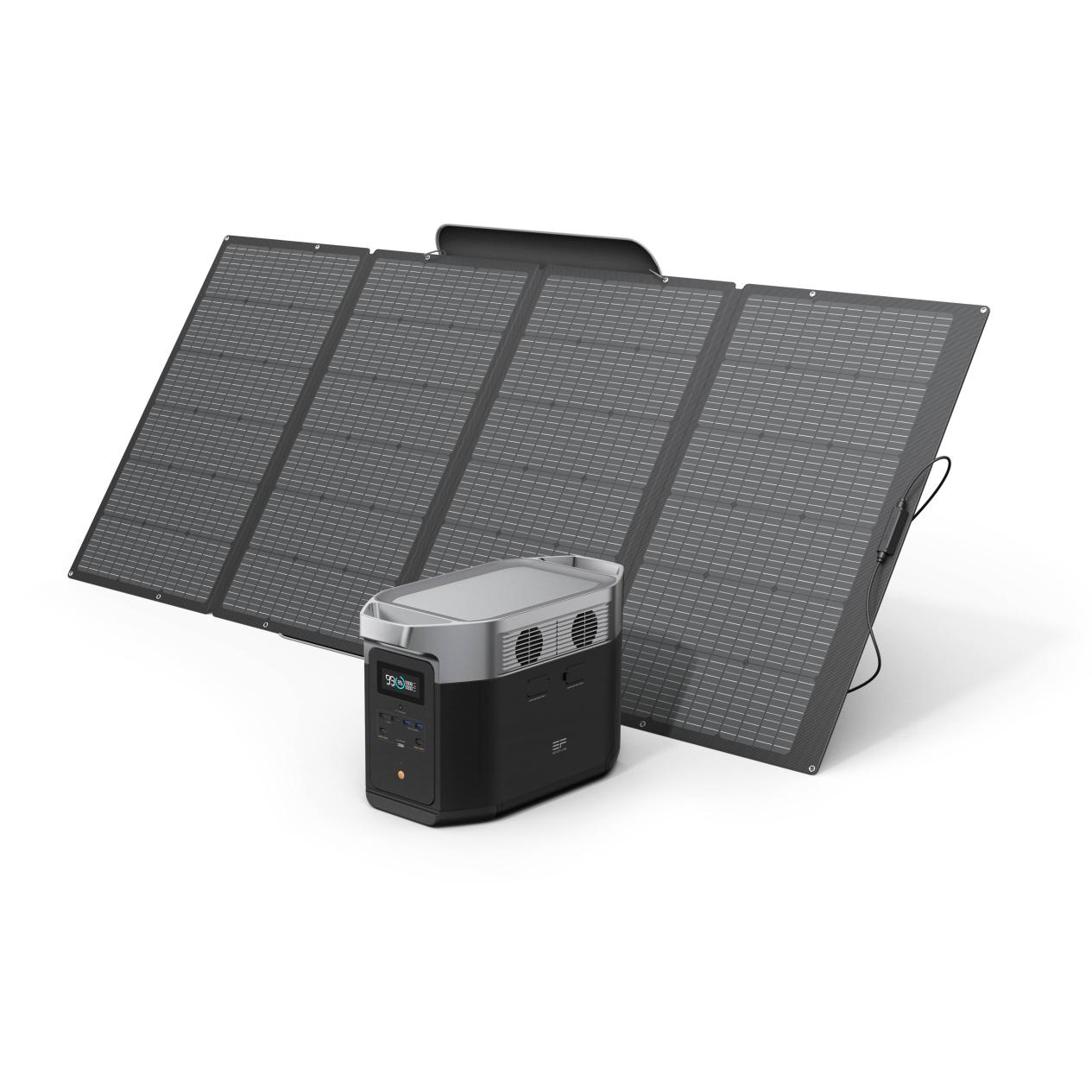- What Is a 100W Solar Panel?
- How Much Power Can You Actually Get?
- What Can a 100W Solar Panel Power?
- How Long Does a 100W Solar Panel Take to Charge a Power Station?
- How Many 100W Panels Do You Need?
- Rigid vs. Foldable 100W Solar Panels
- How to Set Up a 100W Solar Panel
- Benefits of Using a 100W Solar Panel
- How to Choose the Right 100W Panel
- 5 FAQs About 100W Solar Panels
- The Smart Power Choice: Embracing 100W Solar Technology
100W Solar Panel: All Things Explained
- What Is a 100W Solar Panel?
- How Much Power Can You Actually Get?
- What Can a 100W Solar Panel Power?
- How Long Does a 100W Solar Panel Take to Charge a Power Station?
- How Many 100W Panels Do You Need?
- Rigid vs. Foldable 100W Solar Panels
- How to Set Up a 100W Solar Panel
- Benefits of Using a 100W Solar Panel
- How to Choose the Right 100W Panel
- 5 FAQs About 100W Solar Panels
- The Smart Power Choice: Embracing 100W Solar Technology
From off-grid camping to emergency backup, the 100W solar panel is now among the most sought-after options for portable power enthusiasts. It's lightweight, handy, and capable of charging crucial devices and even powering your power station in the wilderness.
In this guide, we will demystify all you need to know about 100W solar panels—how they work, what they charge, how fast they charge, and whether one is enough for your needs.
What Is a 100W Solar Panel?
A 100W solar panel is a photovoltaic (PV) panel that captures the sun's light and converts it into electricity, delivering a maximum of 100 watts of power under ideal circumstances.
But pay attention to this: this "100W" description is the panel's maximum rating, often measured under Standard Test Conditions (STC)—full sun (1,000W/m²), 77°F (25°C), and zero wind.
*This means the panel may not actually reach a full 100W output in real-world conditions—and that’s entirely normal.
Key Specs of a Typical 100W Solar Panel
- Rated Power: 100 watts
- Voltage at Max Power: ~18V
- Current at Max Power: ~5.5A
- Weight: 8–15 lbs (design-dependent)
- Size: 36–42 inches long, 20–25 inches wide
- Output: MC4, Anderson, or DC port
Its manageable size makes it ideal for pairing with portable power stations, and many models—like EcoFlow’s 100W Solar Panel—offer foldable or rigid-frame options suited for travel, RV life, and backup needs.
How Much Power Can You Actually Get?
As explained above: a 100W panel doesn’t always produce 100W.
Its actual performance in the real world depends on the following factors:
- Sunlight hours
- Temperature
- Panel cleanliness
- Wiring & inverter efficiency
In good weather, you can expect around 300–600Wh (watt-hours) per day from a 100W panel. That translates to about 3–6 hours of “peak sun,” which varies by location and season.
For example, according to data from NREL (National Renewable Energy Laboratory) and the PVWatts database on average daily sunlight hours:
- Southern California (e.g., Los Angeles, San Diego) typically receives 6–7 hours of peak sun during spring and summer, generating around 600Wh per day.
- Oregon (e.g., Portland) gets about 4–5 hours of peak sunlight in the summer, producing approximately 400Wh per day.
This means: if a 100W solar panel generates around 300–600Wh of electricity per day under clear weather conditions, it can:
- Fully charge 5–8 smartphones (each using about 30–60Wh)
- Power a laptop for around 5 hours (average consumption of 60–100Wh)
- Run a mini fridge for 3–6 hours (typical draw of 60–100W)
- Fully recharge a small power station like the EcoFlow RIVER 2 (256Wh capacity)
What Can a 100W Solar Panel Power?
A 100W solar panel can handle small to mid-sized electronics. Here's a rough breakdown of common use cases based on a full day’s charge:
Device Category | Device | Power Consumption | Estimated Use per Day (Based on 300–600Wh Output) |
Low Power Devices | Smartphone | ~10Wh per charge | 30–60 full charges |
LED Light (10W) | 10Wh per hour | 30–60 hours of lighting | |
Wi-Fi Router | ~6W per hour | 40–80 hours | |
Power Bank (10,000mAh) | ~37Wh per charge | 8–15 charges | |
Medium Power Devices | Laptop | 40–60Wh per hour | 5–10 hours of use |
Portable Fan | 20–40W per hour | 6–10 hours of runtime | |
Tablet | ~30Wh per charge | 10–15 charges | |
DSLR Camera | ~15Wh per charge | 20–30 charges | |
High Power Devices | Mini Fridge | ~60W per hour | 3–6 hours of operation |
CPAP Machine | 30–50W per hour | 4–8 hours (with battery storage) | |
LED TV (32") | ~60W per hour | 3–6 hours of viewing | |
EcoFlow RIVER 2 Power Station | 256Wh battery | Full recharge in 4–6 hours |
Not Recommended for Direct Power Use
These exceed the continuous output capacity of a 100W panel and require larger systems with inverter and battery storage.
- Microwave (~1000W+)
- Coffee Maker (~800W–1500W)
- Electric Heater (~1000W–1500W)
How Long Does a 100W Solar Panel Take to Charge a Power Station?
Charging time depends on the battery size and how much usable sunlight you get. Here’s a quick reference chart using real-world averages (assuming ~100W of solar input during peak hours):
Power Station | Battery Capacity | Estimated Charge Time with 100W Solar Panel |
EcoFlow RIVER 2 | 256Wh | 3–6 hours |
EcoFlow DELTA 2 | 1024Wh | 12–20 hours |
EcoFlow DELTA 2 Max | 2048Wh | 24–40 hours |
EcoFlow DELTA Pro | 3600Wh | 40–65 hours |
*Using multiple 100W panels in parallel greatly reduces charging time.
For example, connecting 2×100W panels cuts the time nearly in half, depending on solar conditions and panel efficiency.
How Many 100W Panels Do You Need?
One panel is great for basic needs—phones, lights, and small gadgets. But to support more power-hungry tasks or longer off-grid stays, scaling up makes sense.
General Rule of Thumb:
For light use: 1 x 100W panel
For moderate use (fridge + lights + charging): 2–3 x 100W
For heavy use (TV, CPAP, laptop, lighting): 4–6 x 100W with battery backup
EcoFlow’s portable power stations can handle multiple inputs, and many models allow parallel solar charging, giving you faster, more flexible recharge options.


Rigid vs. Foldable 100W Solar Panels
Which design works better depends on your setup:
Foldable Panels
Lightweight and travel-friendly
Integrated kickstands
Ideal for camping, car trips, emergencies
Rigid Panels
- Higher durability
- Mountable on RVs or tiny homes
- Long-term use with fixed systems
How to Set Up a 100W Solar Panel
Basic setup is simple. Most portable solar panels use plug-and-play connectors. You’ll typically:
Unfold the panel and face it toward the sun.
Connect the MC4 or XT60 plug to your power station’s solar input.
Adjust tilt angle for best exposure (30–45° is optimal in most U.S. regions).
Monitor input watts from the power station display.
For better results:
Wipe the panel clean of dust or snow
Re-adjust every 2–3 hours to follow the sun
Avoid shading from trees or tents
Benefits of Using a 100W Solar Panel
- Portability – Easy to carry, store, and move
- Cost-Effective – Affordable entry to solar power
- Expandable – Can pair with other panels
- Off-Grid Power – Keeps devices running anywhere
- Eco-Friendly – Reduces carbon footprint
Whether you’re prepping for an outage or heading off-grid, a 100W solar panel provides reliable, silent energy with zero fuel costs.
How to Choose the Right 100W Panel
When comparing models, focus on:
- Compatibility with your power station (check input voltage)
- Durability – water-resistant, scratch-proof surface
- Weight and size – for portability
- Connector type – MC4, XT60, or DC
- Included accessories – cables, kickstand, case
EcoFlow’s 100W panels are designed to work seamlessly with its full line of portable power stations—delivering high efficiency, great durability, and hassle-free setup.
5 FAQs About 100W Solar Panels
Q1. Can I use a 100W solar panel without a battery?
A: Yes, but only for direct use with DC devices that support variable voltage. Use a battery with an inverter for AC power or consistent output.
Q2. Is a 100W panel safe to leave outside?
A: Yes, the majority of 100W solar panels are safe to use outside, particularly those with weather-resistant construction. To defend against rain, dust, and sporadic splashes, look for a panel with at least an IP65 or IP68 rating.
For instance, EcoFlow's 100W solar panel is designed to withstand normal outdoor circumstances and has an IP68 rating.
Avoid subjecting the panel to severe weather conditions, such as hail, deep snow, or extended high temperatures, to preserve its longevity. One effective strategy to avoid long-term wear is to store the panel indoors while not in use.
Q3. How do I calculate how many panels I need?
A: Start by calculating how many watt-hours (Wh) of energy you use each day. Next, divide that figure by the typical daily output of a single 100W panel, which varies based on sun exposure and is usually between 300Wh and 600Wh.
For instance, you will want at least three panels if your devices consume 1200Wh daily and each panel produces about 400Wh (1200 ÷ 400 = 3). It makes sense to round up to accommodate for efficiency losses, gloomy days, and shade.
Q4. What’s the lifespan of a 100W panel?
A: High-quality panels will endure 10 to 25 years, depending on the use and material. With normal use, folding ones will usually last five to ten years.
Q5. Can I connect a 100W panel to my RV roof setup?
A: Yes, provided that the panel voltage is equal to that of your batteries and charge controller. While portable panels can be utilized temporarily, rigid 100W panels are best suited for roof mounting.
For a safe installation, simply use the appropriate wiring and mounting hardware.


The Smart Power Choice: Embracing 100W Solar Technology
Compact in size but surprisingly capable, a 100W solar panel opens the door to clean energy without the bulk or complexity. It’s a smart solution for staying powered on the road, topping off your battery when the grid goes down, or simply reducing dependence on traditional electricity.
When paired with EcoFlow’s portable power stations, this modest panel becomes a dependable tool—quietly delivering power where outlets can’t reach. Whether you're off-grid for the weekend or preparing for the unexpected, it’s a setup that keeps pace without weighing you down.
Ready to harness solar power on your terms?
Explore EcoFlow’s 100W solar panels and find the perfect match for your portable power station today.